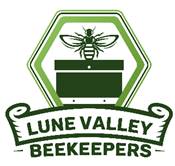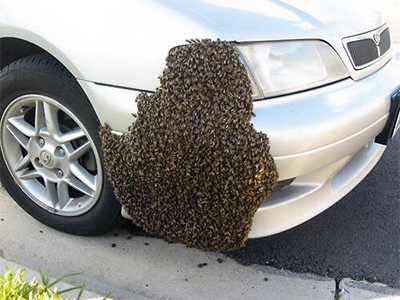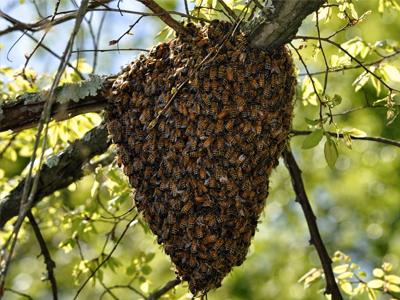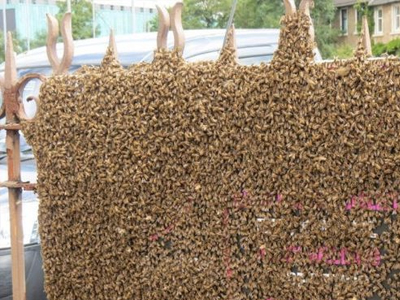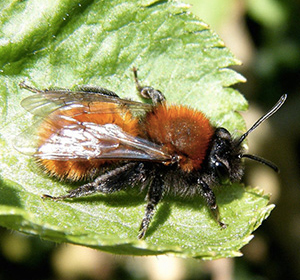Bee Swarms
A bee swarm is an amazing sight to witness. Thousands of bees take flight and travel in a dark cloud 20 to 30 ft in the air moving from their hive to settling as a clump on a branch of similar structure, then onward to a new home.
If you see a swarm of bees in Lancaster, Morecambe and Carnforth areas or the lower Lune Valley, you can to report to us for removal and hiving, before they become a problem in a garden or house. We have competent beekeeper members with the essential equipment and who know how to capture a swarm safely, and will do this for free.
If you are in the Lancaster, Morecambe and Carnforth area, call 01524 811978 and we will assess and attend to remove viable honey bee swarms.
Swarming is the natural means of reproduction of honey bee colonies. A new honey bee colony is formed when the queen bee leaves the colony with a large group of worker bees, a process called swarming. In the prime swarm, about 60% of the worker bees leave the original hive location with the old queen. This swarm can contain thousands to tens of thousands of bees. Swarming can occur at any time from March to September, but usually occurs during the first periods of really warm weather in late April through to June.
If you encounter a swarm of honey bees please, in the first instance, try to confirm that it is indeed a honey bee swarm. Honey bee swarms look like this:
Once you have confirmed it is a swarm of honey bees in the Lancaster, Morecambe and Carnforth area, please contact our swarm co-ordinator on 01524 811978 who will arrange for a competent beekeeper in our beekeeping club to take appropriate action.
If you see a swarm, remember it is a natural process and the bees will not harm you, provided you do not interfere with them.
Bumblebees
Bumblebees are often confused with honey bees. However they are rounder, larger and furrier and come with a variety of coloured stripes across the end of their tails. Are they in a bird box, under the decking, in the compost?
Bumblebees are important pollinators. Leave the nests alone if possible. They will die out at the end of summer and will cause no further problems.
Bumblebees rarely sting or attack people or animals and should therefore not be disturbed. There are 24 different types of native bumblebee, all of which vary in size and colour.
Solitary bees
Are there lots of small bees popping in and out of the wall or very small holes in the ground. Do they have a “reddy/brown” bottom? Are they almost black?
These are solitary bees, of which there are 225 species recorded in the UK and they pose no threat or harm to you, your family or pets. Solitary bees are important pollinators and should be left alone. Their numbers will decrease over the summer and their nests should be left alone.
Wasps
Are they bright yellow with black stripes? Very smooth, mainly yellow with black stripes? Are they in the roof of your house? Are they coming from a round nest in a tree? Is there a nest in the shed? Do they have a high pitched buzz? Are they after all things sweet? Then these are probably wasps.
Hornets
Are they very big with a loud buzz? Are they black and brown with a hint of orange? Living in the roof or shed? Do they have a very big curved tail? These are European Hornets and are valuable pollinators usually found in wooden areas.
We are only able to assist with the removal of honey bees.
